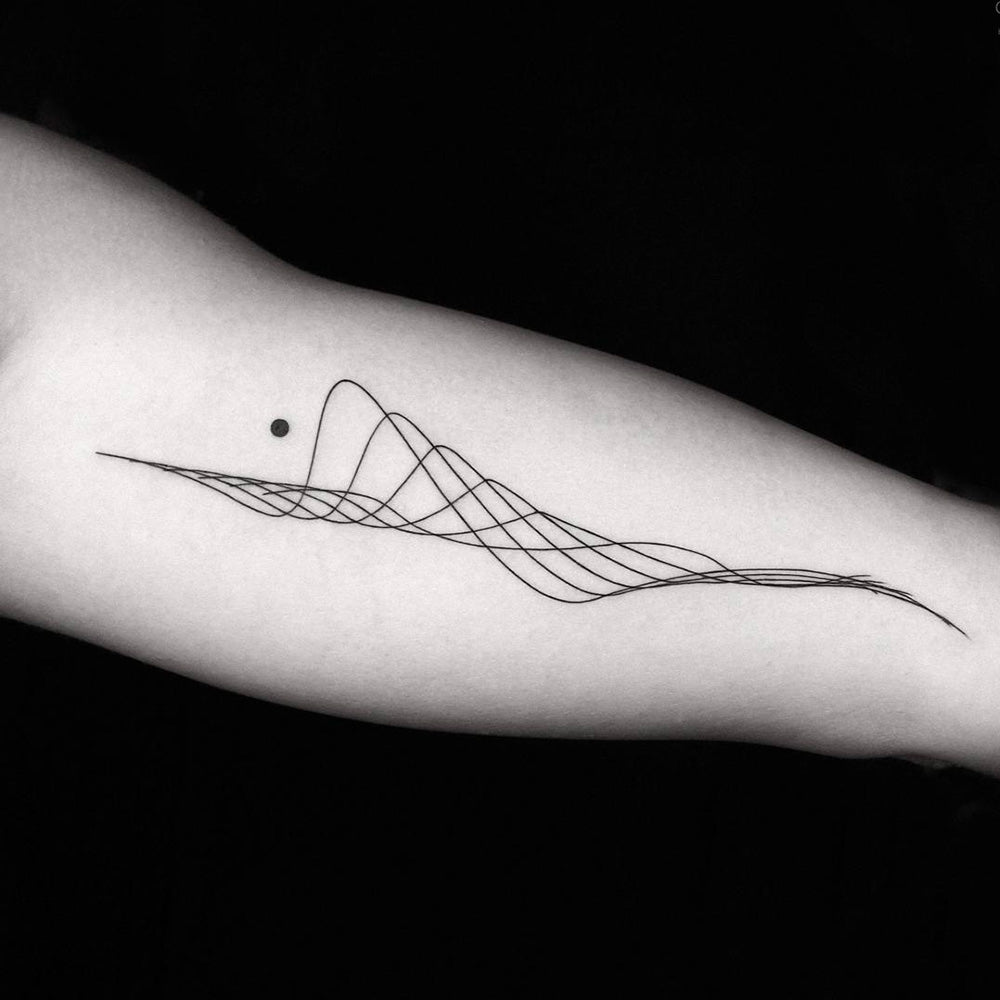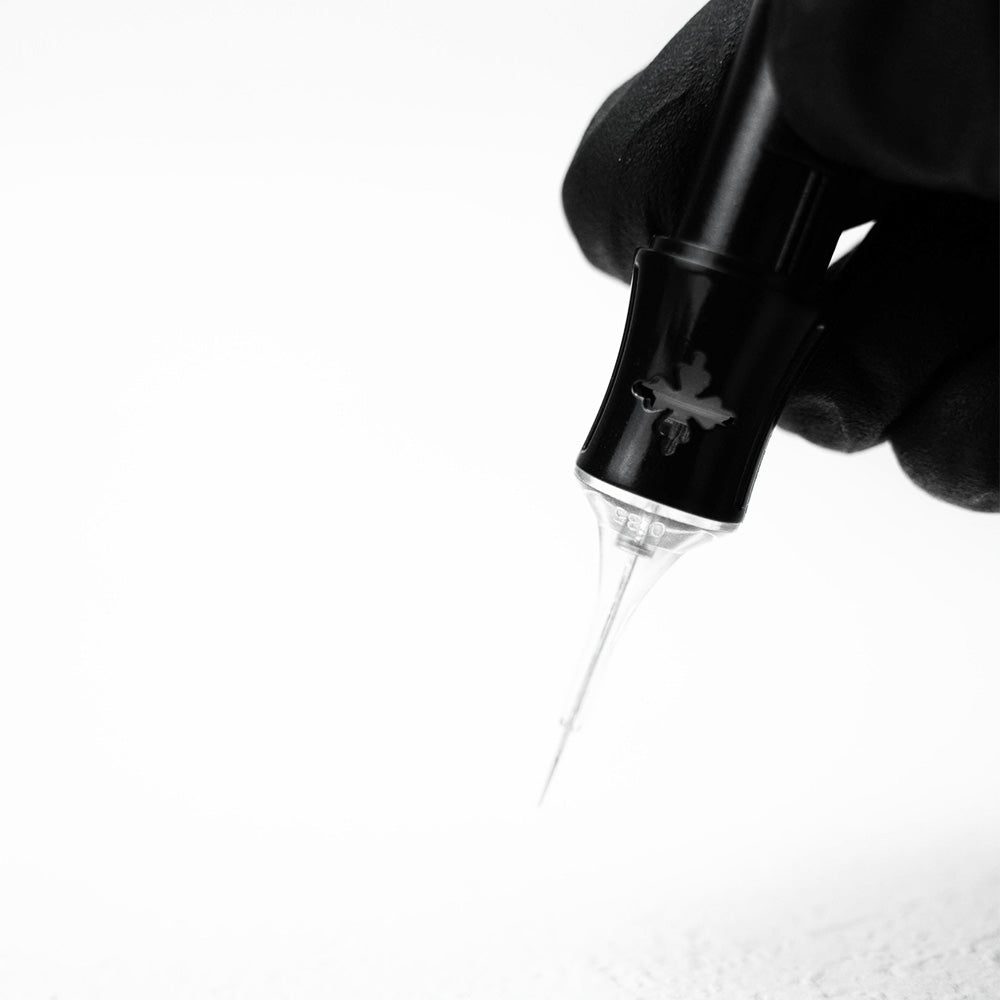How deep do tattoo needles go
Hey there!
After 10 years of tattooing, I’ve noticed that one of the biggest concerns new clients have is: "how many layers of skin does a tattoo go through?" A lot of this worry comes from scary stories or misunderstandings about how tattoos work. The truth is, tattoo needles don’t go as deep as most people think—usually just 1to2 millimeters into your skin.Understanding this tattoo needle depth diagram can help ease your worries and give you a better appreciation for the precision involved in professional tattooing.

Tattoo Needle Depth: How Many Skin Layers a Tattoo Really Reaches. Understanding Skin Structure
To get a clearer picture of how deep a tattoo needle goes, what layer of skin does a tattoo go into, let’s first talk about what your skin looks like. Your skin has three main layers, each with its own role:
Epidermis (Oberflächenschicht)
Die Epidermis ist die äußerste Hautschicht und hauchdünn – an den meisten Körperstellen nur etwa 0,05 bis 0,1 mm dick. Diese Schicht dient als Schutzbarriere und erneuert sich alle 28 Tage. Sie hat keine Blutgefäße, sodass Ihr Tattoo schnell verblassen würde, wenn sich dort Tinte festsetzen würde. Anfänger machen oft den Fehler, zu oberflächlich zu arbeiten und nur in dieser Schicht zu arbeiten. Das Ergebnis sind fleckige, verblasste Tattoos, die nicht richtig heilen.

Dermis (mittlere Schicht)
tattoo skin layer,Beneath the epidermis is the dermis, which ranges from 1 to 4 mm thick depending on where it is on your body. This layer contains blood vessels, nerve endings, hair follicles, sweat glands, and collagen that gives your skin strength. This is where tattoo ink needs to go because the dermis is stable—it doesn’t shed like the epidermis, which is why tattoos are permanent.

Subkutane Schicht (Fettschicht)
Die tiefste Hautschicht enthält Fettzellen und größere Blutgefäße. Dringt die Nadel beim Tätowieren zu tief in diese Schicht ein, kann dies zu übermäßigem Bluten, schlechter Tintenaufnahme, erhöhtem Infektionsrisiko und einem sogenannten „Blowout“ führen, bei dem die Linien verschwimmen und sich ausbreiten. Ich habe schon viel zu viele Tattoos gesehen, die durch zu tiefes Eindringen in diese Schicht ruiniert wurden.

Warum auf die Dermis abzielen?
After years of tattooing different skin types, the dermis is the sweet spot for several reasons:
Permanence: Unlike the epidermis, the dermis doesn’t regenerate, so ink placed here stays put for life, creating long-lasting tattoos.
Stability: This layer provides the perfect environment for ink particles to settle without moving around or blurring.
Healing: The dermis has good blood flow for healing but isn’t so full of blood vessels that it pushes out the ink while healing.
Color Retention: Ink in the dermis stays vibrant because it’s protected from UV damage by the epidermis above. In my practice, I’ve found that tattoos with ink properly placed in the dermis look fresh even after 10+ years.
Wie tief dringen Tätowiernadeln ein?
The standard depth for tattoo needles is about 1 to 2 millimeters—roughly the thickness of a penny. Here’s what affects this depth:
Body Location: Different areas of your body have different skin thicknesses. For example, your face and hands have thinner skin (0.5–1 mm), while your back and chest have thicker skin (1.5–2 mm).
Individual Variations: Age, sun damage, previous tattoos, and scar tissue can all affect how deep the needle needs to go.
Needle Configuration: Different types of needles require slight adjustments in depth.Single needles need less penetration than larger groupings. Consistency is key—maintaining the right depth throughout ensures even ink saturation and proper healing.

Der richtige Tätowiervorgang
Professionelles Tätowieren erfordert mehr als nur die Kontrolle der Nadeltiefe. Hier ist meine Schritt-für-Schritt-Anleitung:
Kommunikation
Jedes erfolgreiche Tattoo beginnt mit klarer Kommunikation. Wir besprechen Ihre Wünsche, legen realistische Budget- und Zeitvorgaben fest, beurteilen Ihre Schmerztoleranz und stellen sicher, dass Sie gesund genug für ein Tattoo sind. Ich verbringe mindestens 30 Minuten mit jedem neuen Kunden, denn gute Kommunikation verhindert 90 % der Tattoo-Probleme.
Design
Um das perfekte Design zu erstellen, müssen Sie das Kunstwerk an Ihre Vision anpassen, Größe und Platzierung für Ihre Körperkonturen optimieren, den Stil an Ihre Vorlieben anpassen und sicherstellen, dass das Design gut altert.
Vorbereitung
Die richtige Vorbereitung ist der Grundstein für den Erfolg. Dazu gehört die Desinfektion des Arbeitsbereichs, das Aufstellen der Ausrüstung, die gründliche Reinigung des Tätowierbereichs, das Anbringen der Schablone und die Anpassung der Nadeltiefe an Ihren individuellen Hauttyp.
Gliederungserstellung
The outline is the foundation of your tattoo. I’ll use steady hand techniques to maintain consistent pressure and speed, stay within the dermis layer, create smooth lines, and monitor your comfort throughout the process.
Schattierung und Kolorierung
This is where your tattoo really comes to life. I’ll develop gradients for smooth transitions between tones, ensure proper ink saturation for vibrant colors, create textures using different techniques, add depth through shading, and regularly check for even coverage.
Nachbehandlung
Even after the tattoo is done, my job isn’t over. I’ll provide instructions for immediate care, explain the healing timeline, and schedule follow-ups to check progress and make touch-ups if needed.
Folgen einer unzureichenden Tiefenkontrolle
Over my career, I’ve seen hundreds of poorly executed tattoos, and incorrect needle depth is a major culprit. Here’s what happens when things go wrong:
Too Shallow (Epidermis Only): The tattoo heals patchily, fades quickly, and may require expensive touch-ups or cover-ups.
Too Deep (Subcutaneous Layer): You might experience ink blowout (blurred lines), excessive bleeding, poor healing, and even scarring that could affect future tattoos.Prevention through proper technique is always better than trying to fix mistakes later.

Mein professioneller Rat
Tattooing is both an art and a science.Use professional tattoo needles,The right depth, combined with proper technique and aftercare, creates tattoos that look beautiful for decades.Great tattoo work requires technical precision, artistic vision,and professional dedication—qualities that only come with experience and commitment to the craft.




